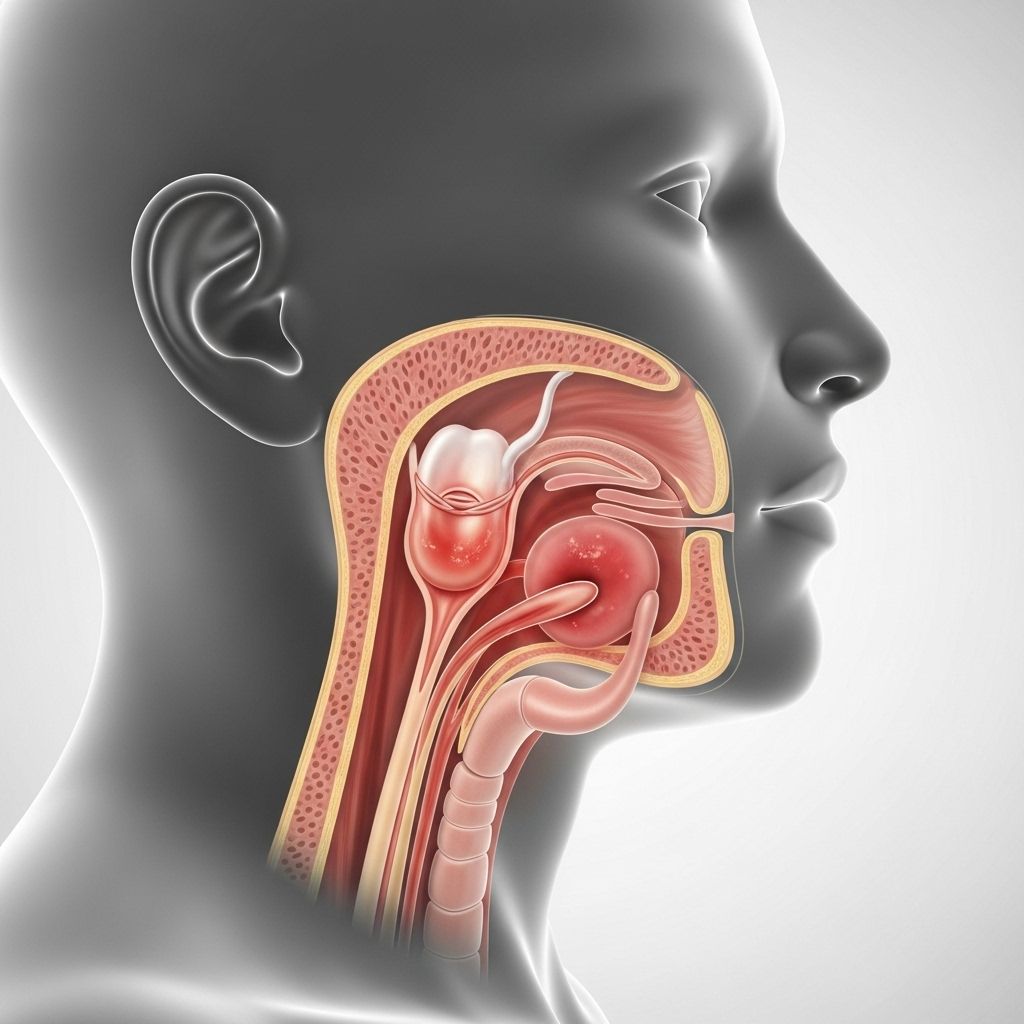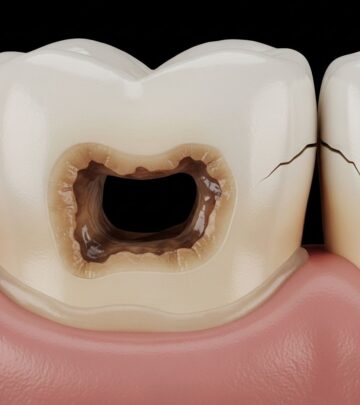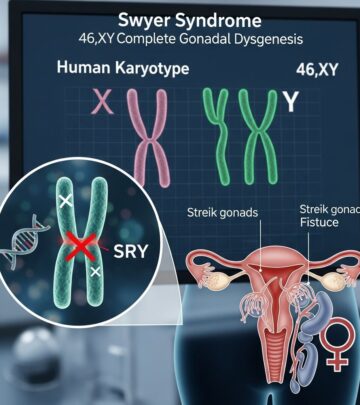Understanding Tonsillitis: Causes, Symptoms, and Treatments
Explore the key facts on tonsillitis including causes, symptoms, diagnosis, treatment, and preventive strategies.

What Is Tonsillitis?
Tonsillitis is the inflammation and swelling of the tonsils, which are two oval-shaped masses of tissue located at the back of the throat—one on each side. The tonsils act as part of the body’s immune defense, filtering out bacteria and viruses and helping prevent infections in the body. Despite this protective role, the tonsils themselves can become infected by the very germs they are meant to defend against, leading to tonsillitis. This condition is common among children but can affect individuals of all ages.
Functions and Importance of Tonsils
The tonsils are part of the lymphatic system and contribute to the immune response by:
- Acting as a first line of defense against inhaled or ingested pathogens
- Producing antibodies to help fight infection
- Filtering out microbes before they enter deeper into the body
While the tonsils are crucial in early life, as children grow older, their immune system gains strength and the tonsils become less essential.
Types of Tonsillitis
Tonsillitis can be classified based on duration and recurrence:
- Acute Tonsillitis: Symptoms last for a few days to about two weeks and resolve with or without medical treatment.
- Recurrent Tonsillitis: Multiple episodes of tonsillitis occur within a single year.
- Chronic Tonsillitis: Persistent inflammation of the tonsils with ongoing symptoms such as sore throat, bad breath, and enlargement of the tonsils.
What Causes Tonsillitis?
The two main causes of tonsillitis are viral and bacterial infections. Understanding which type is responsible is crucial to determining the appropriate treatment strategy.
Viral Causes
- Adenovirus
- Influenza viruses
- Parainfluenza virus
- Enteroviruses (e.g., Coxsackievirus)
- Epstein-Barr virus (causing infectious mononucleosis)
- Herpes simplex virus
- HIV
Viral tonsillitis is more common, accounting for up to 70% of cases. In most viral cases, antibiotics are ineffective and supportive treatment is recommended.
Bacterial Causes
- Streptococcus pyogenes (Group A Streptococcus – most frequent)
- Other streptococcal species (Groups C, G)
- Mycoplasma pneumoniae
- Arcanobacterium haemolyticum
- Bordetella pertussis
Bacterial tonsillitis—most notably caused by strep throat—often requires antibiotic treatment to prevent complications and hasten recovery.
Risk Factors for Developing Tonsillitis
- Age: Children between the ages of 5 and 15 are at highest risk, but tonsillitis can affect anyone.
- Close Contact: Living or working in close quarters, such as schools or childcare centers, increases exposure to germs.
- Season: Tonsillitis is more common in late fall and winter due to increased viral and bacterial infections.
- Weakened Immune Systems: Individuals with immune deficiencies are at greater risk.
Symptoms of Tonsillitis
The classic signs of tonsillitis can vary based on the underlying cause. Common symptoms include:
- Sore Throat: Sudden onset of throat pain, which is sometimes severe
- Swollen, Red Tonsils: May be accompanied by white or yellow patches or coating
- Painful Swallowing (Dysphagia): Difficulty and pain when swallowing food or liquid
- Fever: Body temperature greater than 100.4°F (38°C)
- Enlarged Tender Neck Lymph Nodes: Swelling and tenderness under the jaw or on the neck sides
- Hoarse or Muffled Voice: Speaking can sound different if tonsils are quite swollen
- Bad Breath: Unpleasant odor often caused by bacteria
- Earache: Referred pain due to nerve connections in the throat
- Loss of Appetite
- Headache
- General Malaise/Weakness
Symptoms of Tonsillitis in Children
- Irritability or unusual fussiness
- Drooling (difficulty swallowing)
- Refusing to eat or drink
- Vomiting or stomach pain
- Upset stomach
How Is Tonsillitis Diagnosed?
Diagnosis involves a thorough history, a physical examination, and sometimes special tests to identify the cause and guide management.
- Physical Exam: Doctor examines the throat for redness, swelling, and pus. Lymph nodes in the neck are checked for tenderness and swelling.
- Throat Swab: A soft swab is rubbed against the back of the throat to collect a sample, tested for the presence of Group A Streptococcus. Quick results (rapid strep test) or follow-up cultures may be used.
- Blood Test: A complete blood count (CBC) helps differentiate between bacterial and viral infections.
- Assessment for Rash: Signs of scarlatina (scarlet fever) are noted, especially with strep throat.
Treatment Options for Tonsillitis
Treatment depends on the underlying cause— whether it is viral or bacterial— and the severity of symptoms. Most cases resolve with supportive care, while others may need medications or even surgery.
Supportive and Home Care
- Rest: Sufficient rest helps recovery and supports immune function.
- Hydration: Drink plenty of fluids to soothe the throat and prevent dehydration.
- Pain Relief: Over-the-counter medications such as acetaminophen or ibuprofen can reduce pain and fever.
- Salt Water Gargles: Gargling warm salt water several times daily provides symptomatic relief.
- Humidifier: Using a cool mist humidifier can keep throat tissues moist and comfortable.
- Throat Lozenges and Sprays: These can provide temporary relief (not recommended for young children).
Antibiotic Treatment
- Indicated only for bacterial tonsillitis, especially strep throat.
- Common choices include penicillin or amoxicillin; alternatives are available for those with allergies.
- It is crucial to complete the entire prescribed course even if symptoms improve earlier to avoid complications.
When Is Surgery Needed? (Tonsillectomy)
Surgery to remove the tonsils (tonsillectomy) may be recommended if:
- Tonsillitis is frequent or chronic (e.g., several episodes per year)
- There are complications, such as peritonsillar abscess or difficulty breathing
- Obstructive sleep apnea occurs due to swollen tonsils
- Symptoms do not improve with standard medical treatment
Tonsillectomy is generally safe, though it may bring risks such as bleeding or infection, and full recovery may take one to two weeks.
Possible Complications of Tonsillitis
While most cases resolve without lasting effects, bacterial tonsillitis in particular may sometimes result in complications if not promptly and properly treated.
- Peritonsillar Abscess: Accumulation of pus near the tonsil, causing severe pain, swelling, and difficulty swallowing.
- Middle Ear Infection (Otitis Media): Infection may spread to the middle ear.
- Tonsil Stones (Tonsilloliths): Small, hardened deposits that can develop in the tonsils, sometimes causing bad breath and discomfort.
- Obstructive Sleep Apnea: Swollen tonsils may intermittently block airflow during sleep, causing snoring and restless sleep.
- Tonsillar Cellulitis: Spread of infection into deeper tissues near the tonsils.
- Rheumatic Fever and Kidney Inflammation: In rare cases, untreated strep throat can trigger these serious conditions.
Prevention Strategies for Tonsillitis
- Practice good hand hygiene by washing hands frequently with soap and water.
- Avoid close contact with individuals who are sick, and do not share utensils, drinks, or towels.
- Teach children to cover mouth and nose when coughing or sneezing.
- Disinfect commonly touched surfaces at home and school, especially during cold and flu season.
- Maintain a healthy lifestyle—including adequate sleep, nutrition, and exercise—to support immune health.
When to See a Doctor
- Symptoms are severe or persist longer than a few days
- Difficulty breathing, swallowing, or opening the mouth
- Persistent high fever not responding to over-the-counter medicines
- Signs of dehydration (reduced urination, dry mouth, extreme tiredness)
- Recurring tonsillitis episodes or suspected complications such as abscess formation
Living With and Managing Tonsillitis
Most people recover from tonsillitis with basic supportive care. For recurring or chronic cases, ongoing communication with a healthcare provider is important for monitoring symptoms and adjusting treatment plans if necessary. Education about the signs of complications and the importance of completing treatment courses can help prevent further illness.
Frequently Asked Questions (FAQs)
Q: Is tonsillitis contagious?
A: Yes, both viral and bacterial forms can spread through droplets in the air when an infected person coughs or sneezes, or via shared utensils or close contact.
Q: How long does tonsillitis last?
A: Acute tonsillitis typically resolves within 7–10 days with supportive care or antibiotics if bacterial.
Q: Can adults get tonsillitis?
A: While tonsillitis is most common in children, adults can also get it, especially if exposed to infectious agents.
Q: When is tonsillectomy considered?
A: Surgery may be recommended for frequent, chronic, or complicated tonsillitis cases that do not respond adequately to other treatments.
Q: Can tonsillitis come back after surgery?
A: Recurrence after tonsillectomy is rare, as most or all tonsillar tissue is removed; however, some residual tissue can rarely become infected.
Summary Table: Tonsillitis at a Glance
| Feature | Description |
|---|---|
| Definition | Inflammation of the tonsils, usually caused by virus or bacteria |
| Common Symptoms | Sore throat, swollen/red tonsils, pain swallowing, fever, bad breath |
| Most Common Pathogens | Adenovirus, Influenza virus, Epstein-Barr virus, Group A Streptococcus |
| Diagnosis | Physical exam, throat swab, blood tests |
| Treatment | Supportive care for viral cases; antibiotics for bacterial infections; tonsillectomy for chronic/recurrent cases |
| Complications | Peritonsillar abscess, ear infection, tonsil stones, obstructive sleep apnea |
| Prevention | Handwashing, avoid sharing food/drinks, healthy lifestyle |
Conclusion
Tonsillitis is a prevalent condition, especially among children, that ranges from mild irritation to severe infection. Recognizing symptoms promptly, seeking appropriate medical care, and understanding preventive strategies can minimize complications and speed recovery. Although most cases resolve with simple measures, persistent and serious cases may require advanced treatments, including surgery. Proper hygiene, awareness, and medical guidance are key to managing and preventing tonsillitis complications.
Read full bio of Sneha Tete












